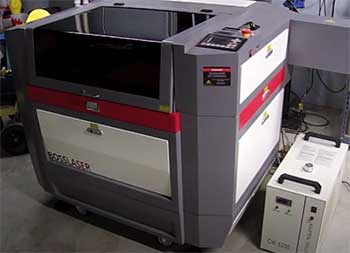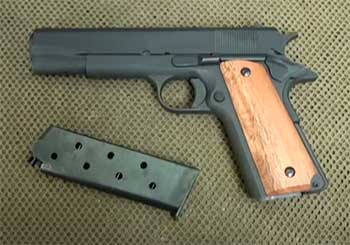When it comes to high quality, supportive insoles for foot pain relief and comfort, two major players stand out: Currex and Superfeet. Both brands offer orthotic-grade inserts designed to provide arch support, cushioning, and impact absorption.
But with so many similarities, how do you know which is better for your needs? Here’s an in-depth comparison of Currex and Superfeet insoles.
A Brief Comparison Table
| Feature | Currex | Superfeet |
| Material | EVA foam, polyethylene foam, PORON®, plastic, gel | Multi-density foams, carbon, plastics |
| Best For | Plantar fasciitis, heel pain, neuropathy, Morton’s neuroma | Plantar fasciitis, arch support, comfort |
| Comfort Level | ★★★★☆ | ★★★☆☆ |
| Durability | ★★★★☆ | ★★★☆☆ |
| Odor Resistance | ★★★★☆ | ★★★☆☆ |
Cushioning and Shock Absorption
The layers and materials used in the construction of these insoles play a big role in how well they provide cushioning from impacts as well as absorb shock.
- Currex Insoles
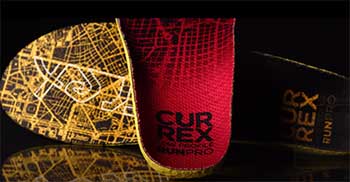
Currex uses a combination of cushioning and rebound EVA foam along with shock-dampening PORON® material.
This allows their inserts to soften blows rather than letting harsh impact forces travel straight up into the feet, ankles, knees and back.
They have excellent shock attenuation thanks to gels and air pockets engineered into areas of maximum impact like the heel.
The result is plenty of plushness without losing supportive structure.
- Superfeet Insoles
Superfeet opts for firmer multi-density cushioning foams in their designs rather than gels. They have a thinner forefoot than many competitors, prioritizing stabilizing shape over softness.
While Superfeet still absorbs more shock than a basic stock insole, they lack some of the plush give that Currex offers. The upside is better energy return that some athletes and runners prefer.
Winner: Currex
Comparison of Arch Support and Stability
Good arch reinforcement is what turns a simple cushioned insole into an orthotic. It helps realign the feet into proper position and ease numerous problems associated with overpronation or fallen arches.
Let’s compare how well Currex and Superfeet support arches:
- Currex Insoles
With deep heel cups and medially posted midsections, Currex inserts cradle the arch to lift it up. This allows them to provide excellent support and stability without aggressive correction.
They fill space under the arch fully with cushioning materials that mold to its shape. The combination of support, comfort and shock absorption makes them ideal for issues like plantar fasciitis.
- Superfeet Insoles
Superfeet designs their insoles with firmer stabilizing arches made from resilient plastics. They don’t flex as much and quickly snap back into their original lifted shape.
The deep heel cups bordering these supportive arches allows Superfeet inserts to control overpronation. Less cushioning creates a very responsive feel underfoot.
Winner: Tie
Both brands offer excellent arch support, with Currex focusing more on cushioned comfort and molded fit while Superfeet prioritizes stability and pronation control.
Heel and Forefoot Comfort Comparison
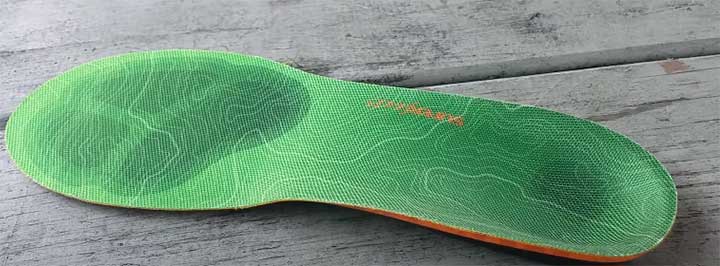
Padding under the heel and metatarsal areas impacts how the feet feel with each step. Thin, hard materials lead to pain over time while ample cushioning prevents discomfort.
Here’s an overview of heel and forefoot comfort:
- Currex Insoles
With thick EVA and PORON® foam under the heel along with gel pads, Currex provides superior cushioned comfort. This helps alleviate common causes of heel pain like plantar fasciitis and fat pad atrophy.
The forefoot uses multiple layers of foam to prevent pressure and irritation of the metatarsals and toes. Enough give cushions without losing stability.
- Superfeet Insoles
Superfeet insoles have firmer heel beds and less padding up front compared to Currex. While the heel cups and arch supports prevent slipping, the materials used don’t have the same shock absorbing qualities.
The thin forefoot allows for ground feedback, but metatarsal padding is lacking. Some may find them comfortable enough for casual use but not all-day wear.
Winner: Currex
Fit and Sizing
An insole needs to fit the unique contours and dimensions of your feet properly in order to function as intended.
Here is how Currex and Superfeet compare when it comes to fit:
- Currex Insoles
With thick cushioning layers topped by microsuede, Currex molds closely to the distinct shape of each person’s foot. This creates a “custom” feel.
They come in a wide range of sizes to accommodate many foot lengths and widths. Each size also has removable rearfoot posts allowing fine tuning of stabilization.
- Superfeet Insoles
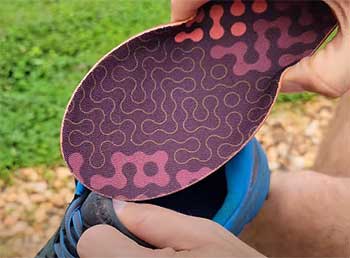
Superfeet designs their inserts in set shapes meant to fit average foot proportions in their respective sizes.
While reasonably deep, they won’t conform perfectly to each foot.
Their sizing options run smaller than many brands, which can limit options for those on the larger end of the spectrum.
No modular adjustments are possible.
Winner: Currex
Odor and Microbial Resistance
Smelly, bacteria-harboring inserts quickly become very unpleasant. Mold and microbes thriving in dark, damp shoes lead to odors and possible infections.
Let’s see how these brands combat those issues:
- Currex Insoles
By infusing anti-microbial chemicals into their EVA and PORON® foams, Currex prevents a wide spectrum of bacteria and fungi from taking hold. Silver ions also fight microbes and odor.
Using open-cell foam construction further discourages contamination by allowing airflow rather than trapping moisture. These technologies keep Currex insoles hygienic and stench-free.
- Superfeet Insoles
Superfeet relies on anti-odor treatments like Agion applied to surface layers help resist microbial buildup. However, they still utilize closed-cell foam which allows less ventilation and moisture wicking compared to Currex.
While Superfeet inserts resist odors better than basic EVA foam, they remain at higher risk for bacterial and fungal growth than Currex. Less breathability is their Achilles heel.
Winner: Currex
Also Read: Comparison of Sheep Feet And Superfeet Insoles.
Durability and Longevity
Considering the price of high-end orthotic inserts, you want them lasting for years rather than just months of daily use.
Let’s look at longevity between models:
- Currex Insoles

Built to handle rugged demands, Currex insoles shrug off high mileage and intense athletic training while keeping their cushioning and support intact thanks to durable space-age materials.
Except for surface textile coverings, every layer and component stands up to repeated compression without packing out or losing efficacy.
Quality craftsmanship creates exceptional longevity.
- Superfeet Insoles
With firm stabilizers underfoot and rugged construction, Superfeet inserts certainly hold up under average demands. However, their thinner, denser foams lose some elasticity and shock absorption over a year or two.
While they continue providing arch support much longer, the compromise in cushioning comfort and fit can prompt replacement sooner than Currex. They’re durable but not indestructible.
Winner: Currex
Price and Value
Let’s compare the prices of these orthopedic insole brands and what you get for your money:
- Currex Insoles
Ranging from $50 – $65 per pair, Currex inserts certainly fall on the pricier end of things. However, their space-age materials, customized fit, and durability make them well worth the investment for the right person.
Those struggling with chronic foot pain and mobility limitations that cheaper alternatives failed to adequately address find Currex insoles greatly enhance comfort, stability and quality of life.
- Superfeet Insoles
From around $40 – $50 per pair, Superfeet hits a more affordable price point while still offering quality materials and support. The greater affordability makes experimenting with them compared to OTC insoles less risky.
They work great for some but those requiring cushioning along the lines of specialty orthotics may be disappointed with Superfeet’s firmer feel. Yet Superfeet still brings stability and relief unavailable from many other mass market brands.
Winner: Tie
Currex offers superior customization and quality while Superfeet provides strong arch support at a more affordable cost. Which option represents the best value comes down to individual needs and budgets.
Currex Or Superfeet: Which One To Pick?
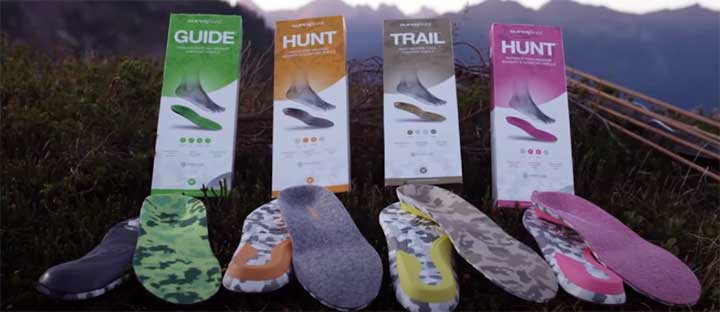
Both Currex and Superfeet make excellent supportive insoles that stand head and shoulders above basic foam inserts and pads. They offer ample arch support, tailored fit, stability, shock absorption and materials formulated to resist odor and microbes.
However, key differences give each brand their strong suits:
Currex shines when superior cushioning and moldable comfort take priority – especially for foot pain and health conditions affected by high-impact activities. Durable construction also maintains their support, bounce and moisture resistance over years of use.
Superfeet puts responsive support and stabilizing structure first. Their firm yet flexible feel makes them ideal for active lifestyles focused on alignment and pronation control rather than plush comfort. Their excellent function comes at a more budget-friendly price point as well.
Ultimately there’s no universally “better” option. It comes down to the areas you most want to improve and your budget. Both brands make quality orthotic inserts that can transform shoes from ordinary and painful to comfortable all-day wear.
Also Read: Comparison of Superfeet Adapt Hike Max And Trailblazer Insoles.
Frequently Asked Questions (FAQ)
Here are answers to some commonly asked questions about Currex and Superfeet insoles:
With rugged construction from long-lasting foams and polymers, Currex insoles typically last between 500-800 miles before cushioning or support drops to levels that may prompt replacement. Their greater thickness and elasticity maintains efficacy much longer than most brands.
Many podiatrists recommend Currex insoles for their customizable thick cushioning, stability and durability. They often relieve foot pain and realignment issues better than cheaper drugstore brands. Models like the RunPro are favorites that stand up to mileage.
Superfeet also earns podiatrist recommendations thanks to supportive structure and stabilizing design, especially for runners and athletes needing pronation control. Their Blue and Green insoles rank among top performers.
The “best” shoe insoles ultimately depend on your foot type, comfort needs, and intended activities. However, a few favorites emerge among experts and consumers:
Currex RunPro: With ample cushioning and molded fit, they allow both comfort and high performance during running/sports.
Superfeet Green: The deep stabilizing shape and medium cushioning helps realignment and pronation issues.
Powerstep Pinnacle: Affordably priced, their firm yet flexible orthotic-grade support works for many foot pain sufferers.
CurrexSole RunPro insoles consistently rate among the best orthotics for relieving plantar fasciitis pain. Features like arch support, deep heel cupping and metatarsal padding takes pressure off inflamed tissue while ample shock absorption prevents re-injury from impact.
Superfeet Green and Orange insoles also make good plantar fasciitis orthotics, especially for active lifestyles, due to their stabilizing contour and firm heel beds. Support and shock attenuation provide symptom relief.
Final Thoughts
In conclusion, both Currex and Superfeet make high quality orthotic shoe insoles but they excel in different areas. Currex focuses more on superior cushioning comfort and customizable fit to alleviate foot pain issues.
Meanwhile, Superfeet prioritizes support, stability and pronation control – especially for athletes.
Ultimately Currex tends to provide better relief for plantar fasciitis and similar conditions needing plush shock absorption tailored to each foot. But Superfeet offers great realignment and sturdy structure at a more budget-friendly cost.
There’s no universally “best” option between the two brands. Choose Currex if customized comfort is most important or Superfeet if stability matters more. Both transform shoes with support lacking in ordinary insoles. Finding the right match comes down to your needs and budget.
